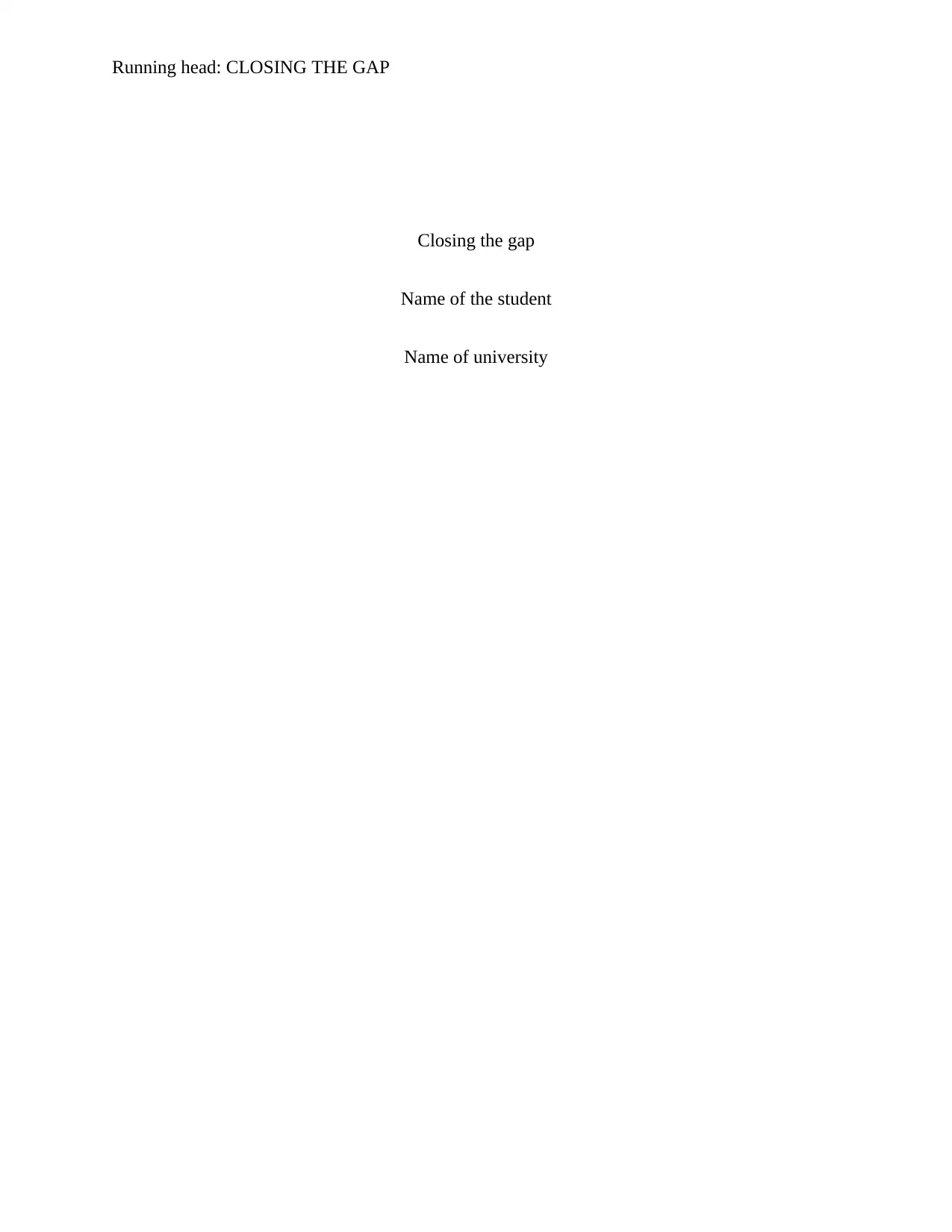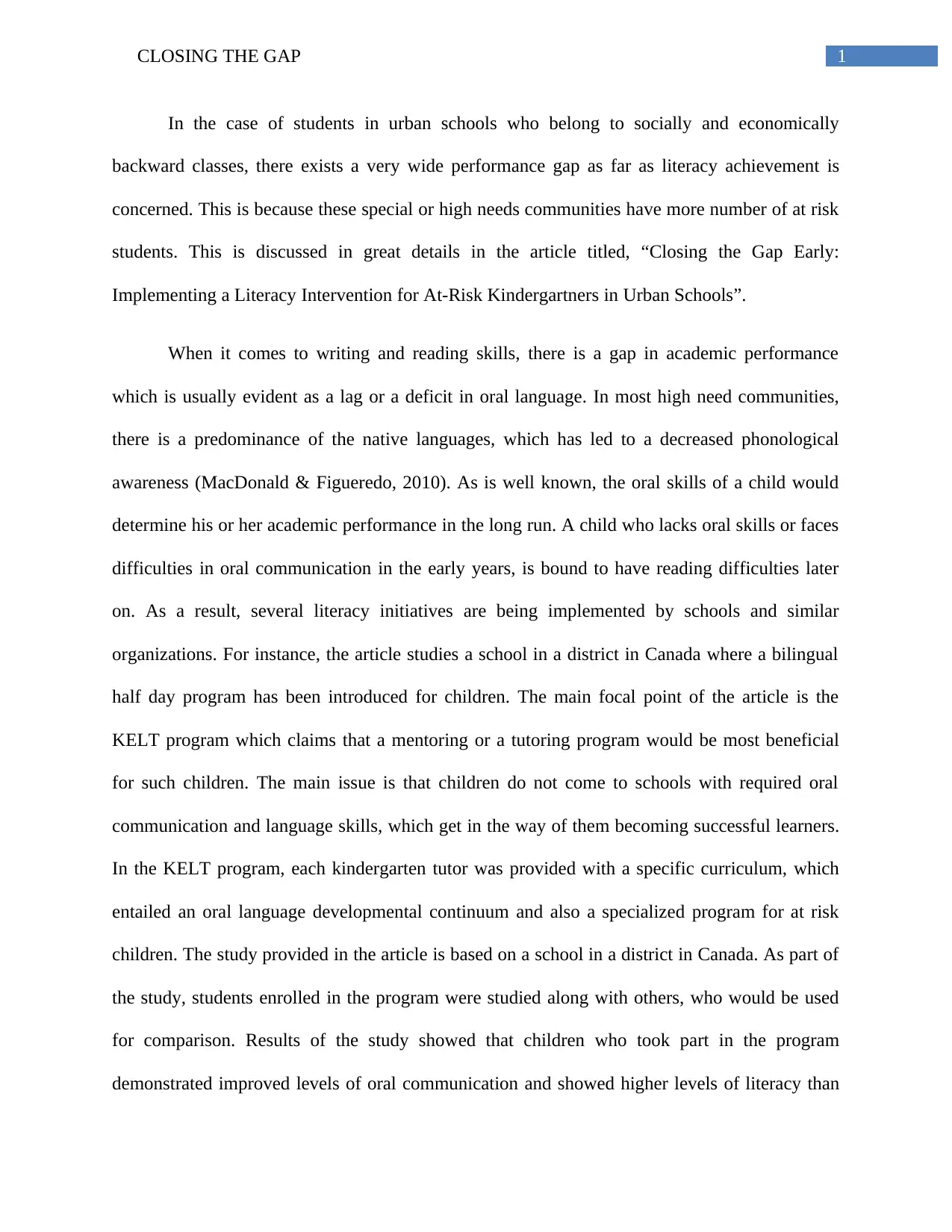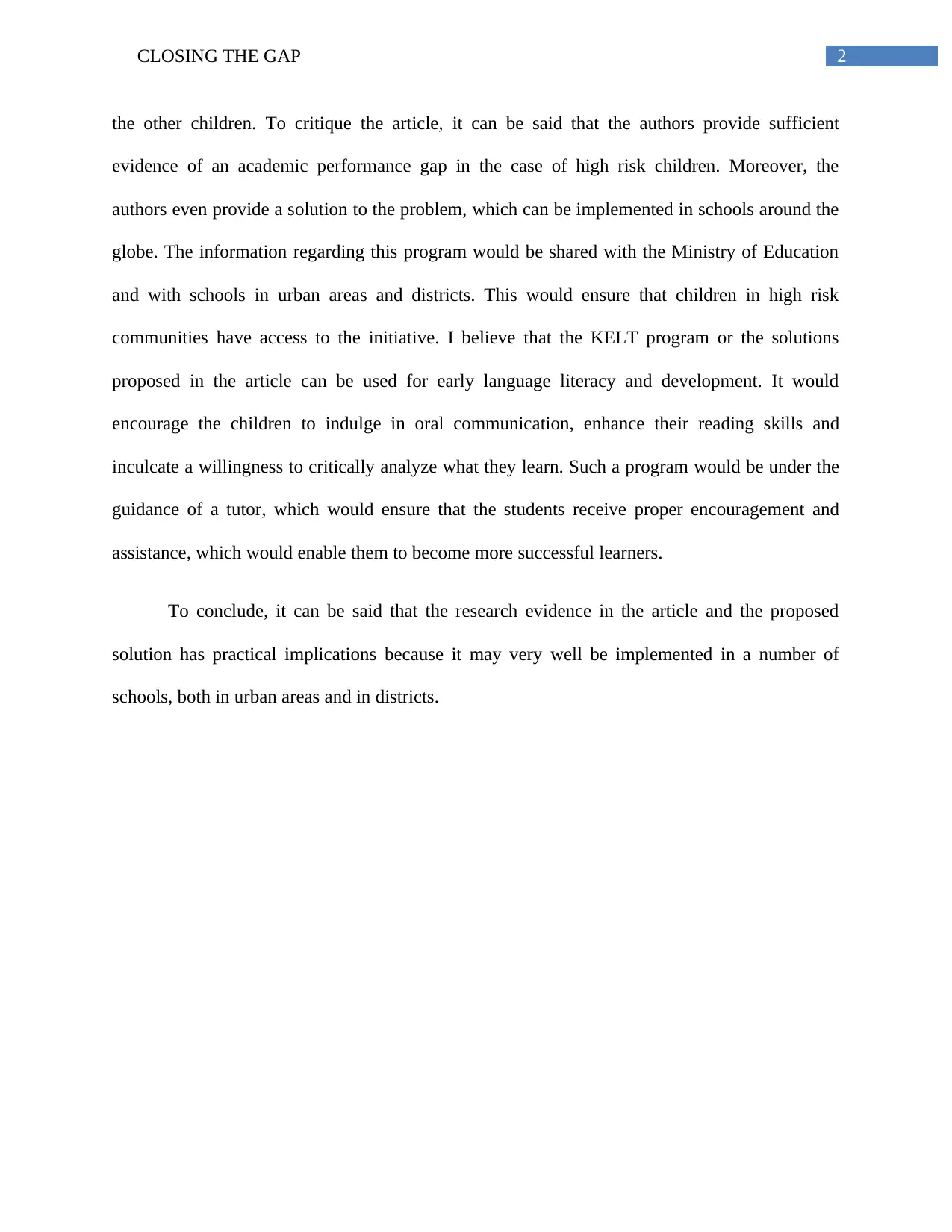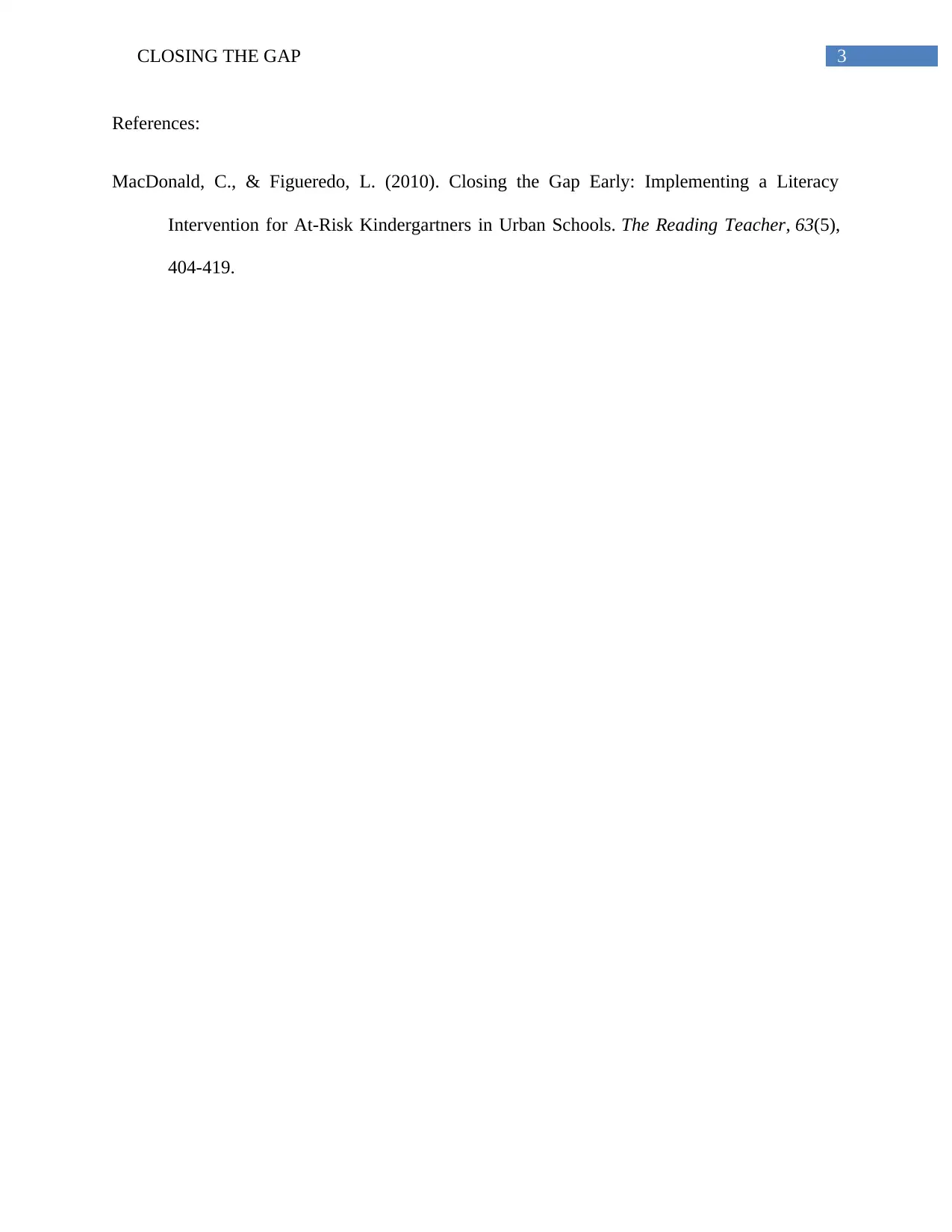Literacy Intervention: Closing the Gap for At-Risk Kindergartners
VerifiedAdded on 2023/06/04
|4
|671
|347
Essay
AI Summary
This essay examines the performance gap in literacy achievement among students from socially and economically disadvantaged backgrounds in urban schools. It focuses on the KELT program, a literacy intervention designed to address the oral language deficits that hinder at-risk kindergartners' academic success. The essay discusses a study conducted in a Canadian school district, where the KELT program demonstrated improved oral communication and literacy levels among participating children compared to their peers. The author critiques the article, highlighting its provision of evidence and a globally implementable solution. The essay concludes by emphasizing the practical implications of the research and the potential for the KELT program to enhance early language literacy, reading skills, and critical analysis among students, ultimately leading to more successful learners.
1 out of 4











![[object Object]](/_next/static/media/star-bottom.7253800d.svg)